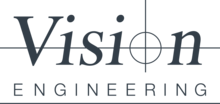By switching to the revolutionary Lynx microscope, one of the world’s largest paper producers has eliminated the fatigue and strain of using traditional microscopes for sample inspection, dramatically enhancing productivity.
Limited usage time for traditional microscopes

“To maintain the highest quality paper consistency, we use sample-based microscope inspection during all stages of our manufacturing process from filter paper and pulp samples to finished newsprint,” explains Donohue research technologist, Frank Azzoli.
“But by its nature, this can be very tedious and monotonous work that entails sitting at a microscope for long periods of time. Our operators could therefore not physically use our traditional microscopes for more than two hours without becoming excessively tired. In addition, they are often struggling to maintain throughput and inspection accuracy.”
Eyepiece less optical technology
US$2bn Canadian firm Donohue is one of the world’s five largest paper manufacturers, producing around 2.4 million metric tons of recycled newsprint and media paper of all grades per year. In addition to five newsprint mills in Canada and two in the US, Donohue is also a huge paper recycler with four recycling operations in Canada and the US.
Donohue recently purchased a Lynx stereo microscope from Vision Engineering for its Thorold Ontario site in Canada, which also inspects paper samples from three other Donohue facilities in Basie Comeau, Sheldon and Texas.
The Lynx exploits what is known as eyepieceless optical technology to achieve a very wide angle of stereo (dual eye) viewing freedom that eliminates the need for inspection operator staff to stare into a pair of traditional eyepieces.
“When the Lynx microscope was demonstrated to us it immediately struck home as an extremely novel design that offered a lot of advantages,” says Azzoli. “It looked right, it was very high quality and it had the flexibility to adapt to our future needs.”
Lynx system offering exceptional freedom
The Lynx system from Vision Engineering allows users to be up to 31cm away during viewing, which combined with its angular flexibility, offers an exceptional freedom of head movement and comfort because operators are encouraged to sit correctly upright when using the instrument.
The eyepieceless technology even allows users to wear glasses or contact lenses.
“Our inspection operators were immediately able to adopt a far better posture for extended microscopy work and looked extremely comfortable when using the instrument,” adds Azzoli.
“As a result they can now inspect paper samples with the scope for up to five hours a day,” continues Azzoli.
Donohue had used traditional microscopes for eight years to examine paper contaminate counts and class (typically category 10) for particles 0.6mm2 and above.
Inspection parameters included paper density property, ink removed state (free or attached), how effectively sticky labels, hot melts and glues had been removed and contaminate measures of ink, plastics, laminates, grit, sand, metal particles and fibre. In addition, Donohue used microscopes to evaluate the performance of new and existing production processes technologies, and contaminate cleaning and removal systems.
While a standard stereo microscope will magnify up to around 40x, the Lynx is capable of going up to an extremely high magnification of 120x. This makes it a highly flexible and easy-to-use inspection tool which has so impressed Donohue that they are now intending to use the Lynx for an increasingly large number of applications including R & D.
“Although Donohue doesn’t currently require the full magnification capabilities of the Lynx, we have already recommended it to our R & D teams who are extremely excited by its capabilities,” says Azzoli. “For 0.06mm2 particle paper contaminate counts and class measurements we use a 20x calibration, but the Lynx can be rapidly set-up for more detailed evaluations via a simple objective lens change.”
Benefits of the Lynx
Nevertheless, using an inspection tool with such high latent magnification capabilities means that Donohue is benefiting from an unsurpassed resolution quality that could not be achieved by alternative means.
“We did originally consider using a high definition camera and display screen to help our operators inspect samples,” reflects Azzoli.
“But the resolution simply wasn’t good enough for our needs. In addition, the Lynx offers an excellent depth of field view and peripheral vision over 360 degrees. This allows other Donohue staff to simultaneously view and discuss samples while standing in front of the scope.”
Increase in working speed
The Lynx’s ease of use has also dramatically accelerated the inspection speed of Donohue’s operators.
“Before we installed the Lynx microscope, it took our operators around 10-20 minutes to fully inspect a paper sample,” states Azzoli.
“Due to the ease of use and image quality of the Lynx, an identical inspection now takes just 5-10 minutes, which means we are now capable of taking on extra production work.”
Before we installed the Lynx, our operators almost feared going up and using our old microscope for inspection work. But it was a job that had to be done because we could not cut our number of random samples without failing to meet our statistical certainty requirements.
“Vision Engineering’s Lynx scope, however, has made this task so much easier and more relaxed that work is completed in far less time with operators no longer suffering from the inevitable headaches and physical strains that come from the mental focus required to use traditional scopes. This means we now hit project deadlines sooner with better accuracy because our operators feel less stressed and able to make better decisions and measurements.”
The Lynx’s design ergonomics also allow the scope to be set-up and left without any further operator intervention.
“Our old microscopes had to be manually tipped through 30 degrees to obtain a sufficient inspection view which required the use of two hands in operation. With Lynx’s adjustable floating stage, samples can be tilted to the desired angle and will remain firmly in place. This leaves operators free to use their hands for note taking, probing and counting, which again significantly enhances their productivity while working at the scope.”
The Donohue operators who now use the Lynx say that the microscope has transformed the quality of their day-to-day working lives.
“Through using the Lynx the productivity and inspection accuracy of our operators has almost doubled,” summarises Azzoli. “In fact once you’re used to using Lynx it becomes an almost transparent inspection tool where, like driving a car, all the required operation movements become automatic. This means we have gained an incredibly powerful inspection tool that not only meets all our existing and future needs, but will quite probably pay for itself within a very short space of time.”













